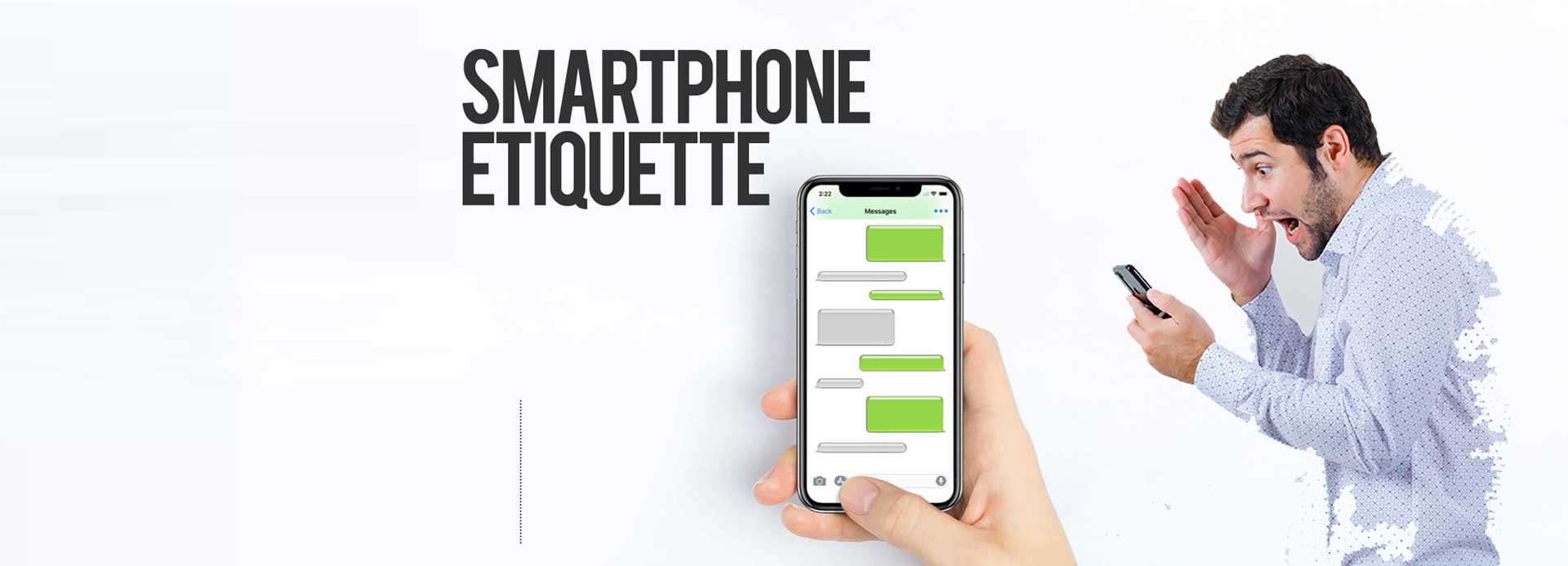
Cell phone etiquette has declined over the years—just take a look at the stats. It’s not too surprising when you think about it. Today’s smartphones are essentially mini-computers, giving us constant internet access no matter where we are.
The Rise of Cell Phones and Etiquette Issues
The cell phone has become an indispensable part of daily life. With 330 million cell phones in the U.S. alone—outnumbering the 311 million residents—it’s clear that mobile phones are deeply embedded in modern culture. However, this widespread usage has given rise to growing concerns about how people behave when using their phones in public and private settings.
The Decline of Cell Phone Etiquette
As phones have become more integrated into our lives, the lines between personal and public behavior have blurred. According to research, 75% of people believe mobile phone etiquette has worsened over the years, signaling a collective frustration with how others use their devices in social situations.
This change in behavior has been driven by the ease and convenience of constant connectivity, but it has led to challenges when it comes to respecting social norms and being considerate of others.
Texting Everywhere, All the Time
One of the most striking statistics is that 3.5 million texts are sent every minute in the United States. Texting has become the preferred method of communication for many, whether for casual chats, work, or school. However, this constant texting often occurs at inappropriate times, such as during class, work meetings, or while driving.
- 90% of students admit to texting during class. This creates distractions not only for the texter but also for those around them. Students may be missing out on valuable lessons or engaging in unproductive behavior.
75% of college students sleep with their phone next to their bed. This constant accessibility means many college students are tethered to their devices even during sleep hours, impacting their rest and possibly their overall well-being.
Texting and Driving: A Deadly Combination
Texting and driving is another growing issue. Despite widespread campaigns highlighting its dangers, 75% of adults admit to texting or talking while driving. The average distraction caused by a single text is 4.6 seconds, a seemingly short time but long enough to lead to accidents.
Texting while driving is a serious safety concern and continues to be a leading cause of accidents, demonstrating how people are willing to risk their lives—and the lives of others—for the sake of staying connected.
The Cell Phone in the Bathroom
The use of cell phones extends even into the most private of spaces: the bathroom. 75% of Americans admit to using their phone while in the bathroom, a habit that might seem trivial but raises questions about privacy and hygiene.
Not only is this behavior considered socially inappropriate in many contexts, but it also opens the door for germs and bacteria to transfer between the phone and the user. Additionally, 20% of people have dropped their phone in the toilet, which could lead to expensive damage and an added layer of frustration.
Voice Volume and Public Conversations
The way people communicate on the phone has also changed. On average, individuals speak 3 times louder on the phone than they do in person, which can be jarring for those nearby.
This increase in volume often leads to uncomfortable situations where the people around the phone user are subjected to hearing personal and sometimes intimate conversations.
- 55% of people have felt uncomfortable hearing a personal conversation taking place in public spaces. With cell phones amplifying voice levels and making private conversations audible to everyone in the vicinity, it’s no surprise that many people find it unsettling or even intrusive.
The Illusion of Good Manners
Despite all of these behaviors, many mobile users still believe they are using their phones responsibly. 90% of mobile users feel they have excellent cell phone manners, but this disconnect between self-perception and actual behavior reflects the growing divide between what is considered socially acceptable in digital interactions and what might be bothering others in real-life settings.
The Bottom Line
Cell phone misuse is becoming more prevalent, and the statistics above shed light on how pervasive and normalized it has become in our society. The inability to disconnect and the lack of awareness of the impact of these behaviors on others are major contributors to poor cell phone etiquette.
By paying attention to these statistics, individuals and institutions can start addressing the problem and begin promoting better digital behaviors, such as setting boundaries for phone use during social interactions, class, and while driving.
Ultimately, the way we use our phones—both in public and private spaces—can have a significant impact on our relationships, productivity, and safety.
Being mindful of how we interact with our devices can help restore respect for shared spaces and encourage more courteous behavior in an increasingly connected world.
To illustrate the decline in cell phone etiquette in recent years, OnlineCollege.org recently released an infographic that sheds light on the widespread misuse of mobile phones in public.
This infographic presents a range of alarming statistics, demonstrating how pervasive and disruptive these behaviors have become in our daily lives.

I am an author, digital educator and content marketer. I record, edit, and publish content for AnsonAlex.com, provide technical and business services to clients and am an avid self-learner. I have also authored several digital marketing and business courses for LinkedIn Learning (previously Lynda.com).

![10 Common Performance Testing Mistakes and How to Avoid Them [Infographic] 10 Common Performance Testing Mistakes and How to Avoid Them](https://www.skillzme.com/wp-content/uploads/2025/02/hero-image-performance-testing-200x200.jpg)
![Albert Einstein: The Father of Solar Cells [Infographic] The Father of Solar Cells](https://www.skillzme.com/wp-content/uploads/2025/02/hero-image-The-Father-of-Solar-Cells-200x200.jpg)
![How Green is the iPhone [Infographic] How Green is the iPhone](https://www.skillzme.com/wp-content/uploads/2025/02/hero-image-How-Green-is-the-iPhone-200x200.jpg)


Recent Comments